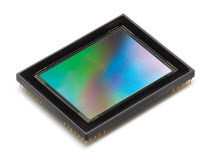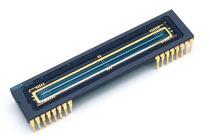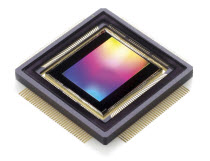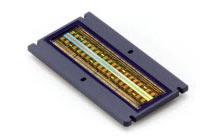| How
it all started
The beginnings of the CCD vs CMOS race-to-the-top has its origins
in the advancement of mobile phone-imaging technologies. Since the
mobile phone camera began using CMOS, a great deal of investment
was directed to upgrading this type of sensor which resulting in
a great improvement in image quality even though pixel sizes were
reduced. Due to high-volume applications, currently, CMOS imagers
outsell CCD sensors.
Machine vision also benefited from the investment in mobile phone
imaging where, for many applications, CMOS has replaced CCDs.
In the 60s and 70s, Teledyne DALSA's founder, Dr Savvas Chamberlain
was instrumental in the development of both CCDs and CMOS sensors.
Originally, CCD sensors dominated the market because of their superiority
of images relative to technologies then available - CMOS image sensors
requiring more uniformity and smaller features than silicon wafer
foundries could deliver.
Twenty years later, in the 90s, when other technologies had been
progressed, interest in furthering CMOS technologies was renewed.
This renewed interest was based on expectations of lowered power
consumption, camera-on-a-chip integration and lowered fabrication
costs from the reuse of mainstream logic and memory device fabrication.
Achieving these benefits while simultaneously delivering high image
quality, has resulted in CMOS imagers joining CCDs as a mainstream,
mature technology.
How they both work
Both types of imagers capture light, convert it into an electric
charge and process it into electronic signals.
A CCD imager is an analog device. Each pixel is dedicated only
to capturing light and all processing of that captured charge happens
off-pixel where additional camera circuitry converts the charge,
one pixel at a time, into digital information. This results in a
CCD device being more power-hungry than the other type of sensor
because CCD-based cameras need additional mechanisms for conversion
and for correction of noise.
On the other hand, in a CMOS sensor, the capturing of light, conversion
into a charge and then amplifying the signal is handled individually
by each pixel, effectively becoming a camera on a chip. However,
a side-effect of the way in which the CMOS algorithm works means
that there is less area in each pixel available to collect light.
The result is that there is higher noise-to-signal ratio in CMOS
sensors and for this reason, CMOS sensors are considered to be inferior
in low-light conditions. Because conversion takes place in each
pixel, uniformity is lower although the pixel's ability to execute
a number of actions at the same time enables high total bandwidth
for high speed applications.
Which sensor is "better"?
There is a role for either type
of sensor machine vision applications; the choice being dependent
on needs.
CMOS imagers offer superior integration, power dissipation and system
size at the expense of image quality (particularly in low light)
and flexibility. They are the technologyof-choice for high-volume,
space-constrained applications where image quality requirements
are low.
CMOS imagers are not very sensitive to the near infrared. In fact,
they are engineered to be as insensitive as possible in the NIR.
In contrast, CCDs that are specifically designed to be highly sensitive
in the near infrared are much more sensitive than CMOS imagers.
Tradtionally CCDs have offered superior image quality and flexibility
at the expense of system size. They havve been the most suitable
technology for high-end imaging applications, such as broadcast
television, high-performance industrial imaging and many scientific
and medical applications. Additionally, flexibility means users
can achieve greater system differentiation with CCDs than with CMOS
imagers.
Cost-of-ownership between the two technologies is approximately
equal although CMOS may be less expensive at the system level than
CCD when considering the cost of related circuit functions.
In summary, CMOS sensors can potentially be implemented with fewer
components, use less power, and/or provide faster readout than CCD
sensors and are less expensive to manufacture. CCD is a more mature
technology and is, in most respects, the equal of CMOS.
Choosing the correct imager has never been a simple task as each
application makes its own demands which impose constraints that
effect performance and price. However, Adept Turnkey's engineers
are ready to advise you on a suitable choice.
|







